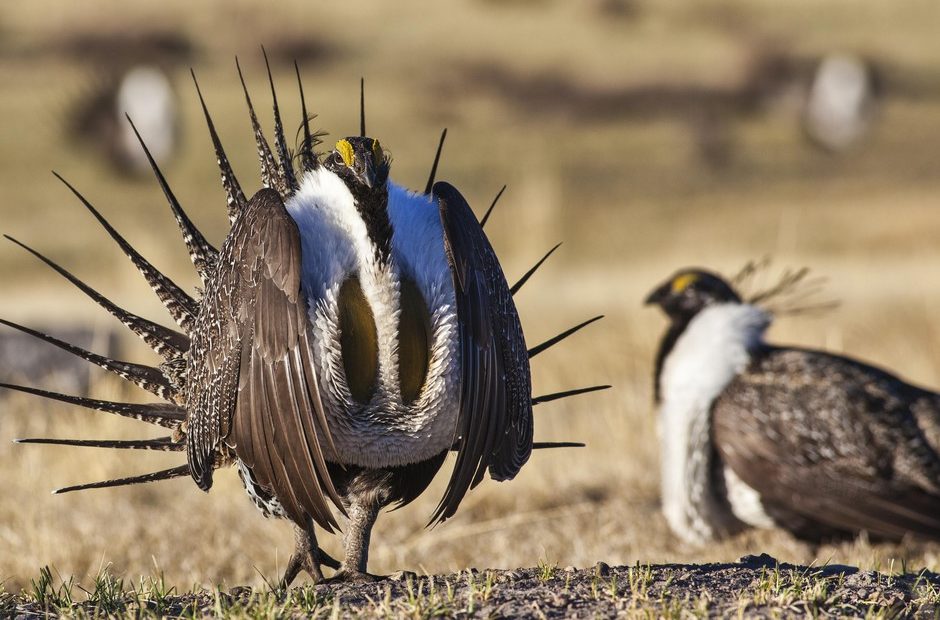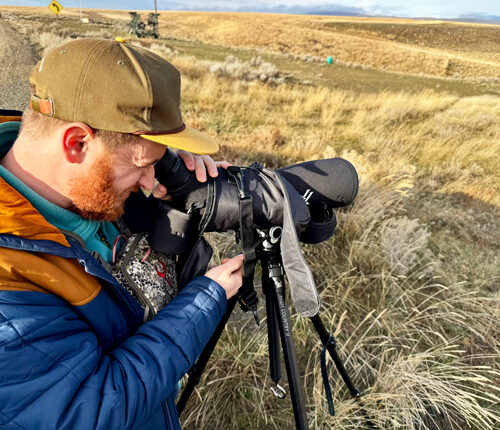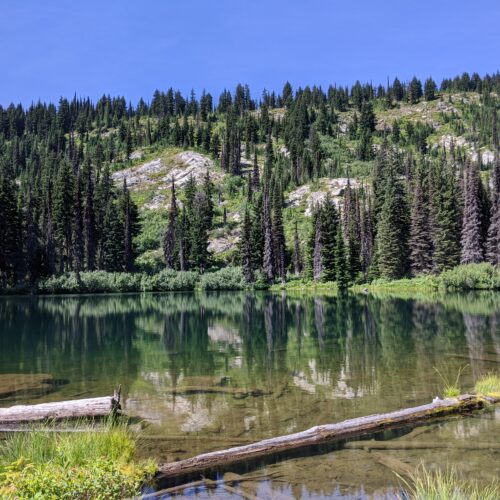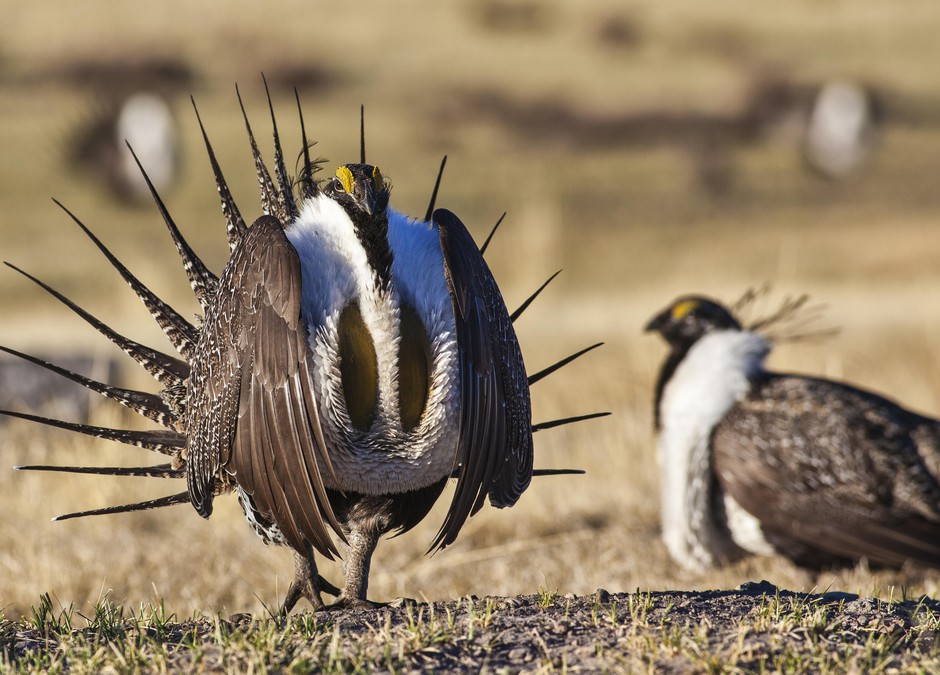
Grazing Restrictions Could Be Lifted On Some Of Oregon’s Sage Grouse Habitat
The Trump administration wants to reduce restrictions for greater sage grouse across seven states. For the imperiled birds in Oregon, that means fewer grazing restrictions in some specific habitat. The decision has rankled conservation and hunting groups and been supported by ranchers.
The updated plans would remove grazing restrictions on Bureau of Land Management land that was initially set aside for research purposes. These areas were meant to permit scientists to learn what happens to habitat when cattle aren’t present.
Those “research natural areas” made up less than one-fifth of one percent on BLM grazing land in Oregon, said Greta Anderson, with the conservation group the Western Watersheds Project.
“It’s really about an agency’s willingness and the administration’s willingness to allow extractive uses to occur anywhere and everywhere, instead of keeping some places free of those impacts for the sake of science,” Anderson said.
But it’s not that simple for the ranchers who depend on that land, said John O’Keeffe, a rancher in Adel, Oregon, and a member of the Oregon Cattlemen’s Association.
“If you’re one of the people that have those (grazing) permits, it’s a hardship to get up and lose some of your forage,” O’Keeffe said.
Responsible ranching is good for sage grouse habitat, which stretches across 11 Western states, including Oregon and Washington. O’Keeffe said ranchers never thought Oregon’s research areas were needed.
“There hasn’t been grazing on the Hart Mountain (National Antelope) Refuge, which is in that same area. And interestingly enough, the sage grouse populations on the ungrazed Hart Mountain has basically tracked just the same as the sage grouse trends that have habitat in grazed areas,” O’Keeffe said.
The Hart Mountain National Antelope Refuge in southeastern Oregon was closed to grazing in the mid-1990s. Wild horses were also removed at that time, but the BLM doesn’t have management or research authority in those areas. That responsibility falls to the U.S. Fish and Wildlife Service.
The BLM is looking into areas it can use for research next year at Hart Mountain and its sister refuge just across the Oregon-Nevada border.
Cattle have not been stopped from grazing on these 13 research areas since the restrictions were put in place in 2015.
In 2015, the federal government decided not to add greater sage grouse to the list of animals protected under the Endangered Species Act. That came after decades of work and compromise between conservationists, ranchers, and state and federal officials to protect the quirky bird.
Sage grouse are known for their flamboyant mating dances. They face a variety of threats across their habitat – in Washington and Oregon from wildfires, encroaching juniper trees and extensive grazing. They’re seen as an important species across the West. The health of sage grouse can point to the health of the sagebrush ecosystem as a whole and the more than 350 other species that live there.
The 2015 decision was considered a potential new way forward in species conservation – a way to avoid stringent land use restrictions often placed on people when species are listed as endangered or threatened.
Those plans were not perfect. Some conservationists, ranchers and industry groups had appealed the plans, seeing them either as not protective enough or too restrictive.
In 2017, Interior Secretary Ryan Zinke ordered a review of state and federal sage grouse plans.
“With the erosion of those plans mid-implementation, the administration has made it incredibly difficult to create a resilient public lands management model – one that balances the pressures of development and recreational uses and addresses cumulative impacts of variables like drought, wildfire and invasive species,” said Backcountry Hunters & Anglers conservation director John Gale in a statement.
The updates to Oregon’s BLM sage grouse plans are far less significant than oil and gas drilling restrictions the agency wants to lift in other states. The BLM also updated plans in Wyoming, Nevada, Utah, Colorado, California and Idaho.
Those restrictions could change the course of the bird’s fate, conservation groups say. Jayson O’Neill, with the Western Values Project, said when sage grouse populations are diminished in one state, it hurts the population as a whole across its wide range.
“We can kick the can down the road on a species for a long time, but most folks would agree that being proactive and working collaboratively to get in front of a situation (is best). … The sage grouse could be a success story, if we’re responsible and we let science and common sense go forward,” O’Neill said.
People will be able to comment on the BLM plan updates. A final decision is expected early in 2019.
Related Stories:

Searching for sage grouse: Looking for a chicken-sized needle in south-central WA
Seth Hulett, Audubon Washington’s senior program manager of the Columbia Plateau, searches through his spotting scope for sage grouse. (Credit: Courtney Flatt / NWPB) Listen (Runtime 4:12) Read In south-central

Bonneville Power Administration could be losing money because of contract handling, federal audit says
The McNary Dam in Umatilla, Oregon. The Bonneville Power Administration’s Fish and Wildlife program works to lessen the impact of Columbia River Basin dams on wildlife. (Credit: Pacific Northwest National

More than $30 million in restoration projects taking place in North-Central Idaho
This photo from August 2020 features Rocky Ridge Lake, a popular hiking and camping site in the Nez Perce-Clearwater National Forests. (Credit: Lauren Paterson / NWPB) Watch Listen (Runtime 1:03)
















